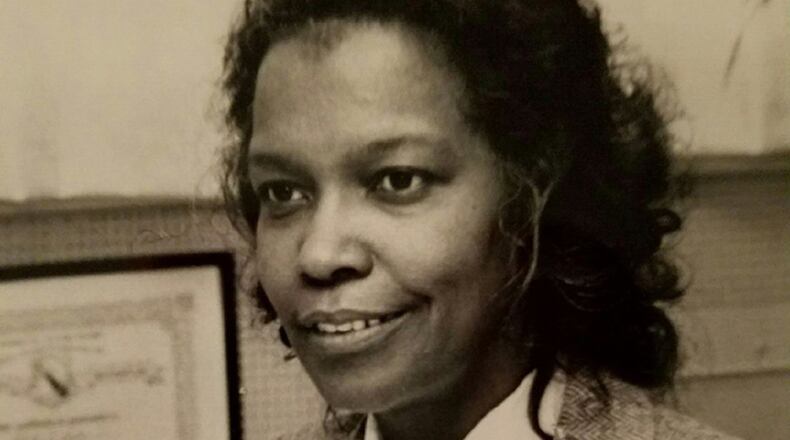Bolds joined the Air Force team as a civilian in 1955, and it wasn’t long before the service realized what and who it had on its team.
She had said, “The Air Force paid for me to get a master’s degree in computer science from the University of Dayton in 1973 as well as a master’s degree in management from Simmons Women’s College in Boston in 1977.”
Bolds quickly earned the respect of her leadership and colleagues through her work on gathering vibration data on numerous Air Force aircraft, including the B-2, F-15, C-133A. Bolds also published numerous technical documents on this topic during her 30-year career.
It was noted that Bolds didn’t approach her work just as a career but as a calling. She instilled in her children, grandchildren and Sunday school children that science, technology, engineering and math were the building blocks of the future.
“My mom was the most phenomenal woman I will ever know,” said Karen Beason, Bolds’ daughter and 88th Civil Engineering Group environmental protection specialist. “As a mother of five children, she was our guidance counselor and life coach.”
Beason explained that her mother not only mentored them but gave spiritual guidance to students of all ages and tutored others who were in the prison system.
Bolds had a stroke in her early 40s but still went on to complete but two master’s degrees during her career at Wright-Patterson AFB.
“My grandmother excelled in every aspect of her life and embodies the biblical definition of a virtuous woman,” said Adrienne Ephrem, Bolds’ granddaughter and integration manager at the Air Force Research Laboratory’s 711th Human Performance Wing. “The contributions she made to the Air Force as a physicist, working on the B-2 Bomber, continues to live on today as proof that hard work can help you achieve anything beyond your wildest dreams.”
Bolds was recognized Feb. 24 at the Schuster Performing Arts Center in Dayton as one of the 2019 Dayton Skyscraper Honorees. Willis Bing Davis, project designer and curator of EbonNia Gallery, was the creator of the Skyscraper project, metaphorically (through art) representing honorees’ contributions to the Dayton community.
Davis chose to illustrate Bolds’ contributions with an artistic collage, representing her life and work, professionally, spiritually and through her mentoring and tutoring.
He honored Bolds for her contributions to the nation, working as a physicist from 1955 to 1987 with the Air Research Laboratory, studying aircraft vibrations and flight dynamics for U.S. Air Force fighter aircraft and for her work tutoring students in STEM.
The 2019 Women’s History Month theme is “Visionary Women: Champions of Peace and Nonviolence.” Bolds had a vision and a determination to do her best in everything she endeavored. She also championed helping others strive toward excellence.
Other relatives and mentees whose lives were touched by Bolds include:
Kristy Bolds, Phyllis’ granddaughter, said, “Not enough words can describe her brilliance and amazing work ethic. She will always be a hero in my eyes. She set the bar so high, I don’t know if I can ever [live up to it,] but I will continue to work hard and strive for the best. I’m proud to be her granddaughter. May her sweet spirit have peace in heaven.
Nyra Davenport, one of Bolds’ mentees, said, “She was my Training for Service instructor. She was ‘no nonsense’ and opened my eyes to how I needed to increase my study habits!”
Phyllis Bolds died Nov. 9, 2018, but her legacy lives on.
About the Author
